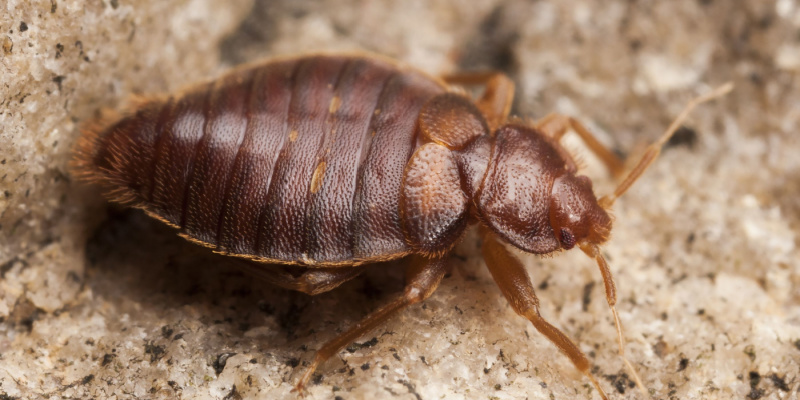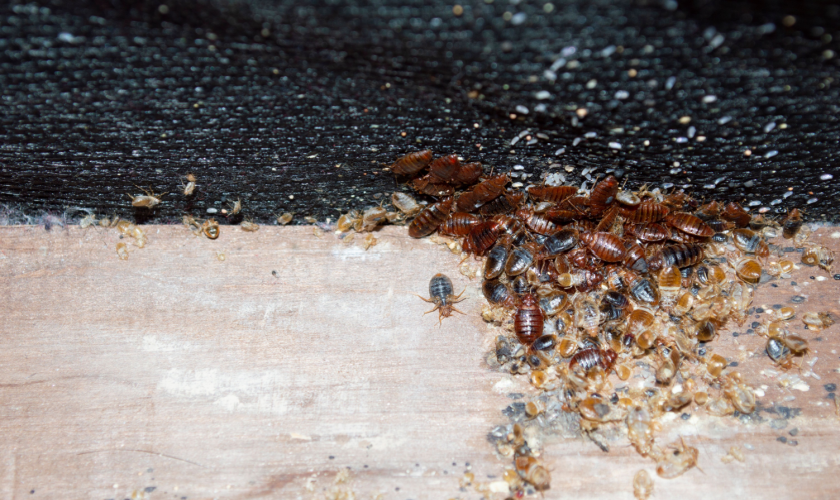Effective Bed Bug Exterminator: DC Services with Heat Treatment
Effective Bed Bug Exterminator: DC Services with Heat Treatment
Blog Article
Exploring the Scientific Research Behind Bed Bug Warmth Treatments as a Sustainable Pest Administration Method
In the realm of insect management, the pursuit for efficient and lasting services stays a constant search. One such approach that has actually obtained grip in current years is making use of heat therapies to fight bed pest invasions. By harnessing the science behind thermal fatality factors for these consistent bugs, warm therapies provide an encouraging choice to standard chemical-based approaches. The complexities of how heat efficiently gets rid of bed bugs and the wider ramifications for sustainable insect management practices make this a topic worth exploring even more.
Bed Pest Heat Treatment Process

Thermal Death Point for Bed Bugs
Revealing bed insects to raised temperature levels past their thermal resistance variety is crucial for attaining reliable eradication in heat treatment procedures. The thermal death factor for bed bugs describes the temperature at which these bugs can not survive. Study shows that bed pests start to perish when subjected to temperatures over 113 ° F(45 ° C) for a continual period. As the temperature level increases, so does the death rate of bed insects. At around 118 ° F(48 ° C ), bed pests start to pass away swiftly, with a death price of nearly 99% within mins of exposure. This shows the level of sensitivity of bed pests to heats and highlights the performance of heat therapies in removing problems. By getting to and preserving temperature levels over the thermal fatality factor for bed pests, insect management experts can make sure comprehensive removal of bed pest populaces, including hard-to-reach areas where chemical therapies might be much less reliable. Understanding the thermal death point for bed pests is important for executing successful warm therapy methods and accomplishing lasting insect administration end results.
Advantages of Heat Treatments
Having actually established the essential thermal fatality point for bed insects, it is critical to currently explore the substantial advantages that warmth therapies provide in effectively removing these resistant insects. When compared to typical chemical methods, warmth treatments existing several crucial advantages. One of the primary benefits is that warm can penetrate deep into splits read this article and crevices where bed pests hide, ensuring that also one of the most hard-to-reach areas are heated up to dangerous temperature levels. This extensive approach not only eliminates live bugs but also targets bed bug eggs, protecting against future invasions.
In addition, heat therapies are eco friendly and non-toxic, making them a lasting insect management approach. Unlike chemical pesticides, warmth treatments do not leave dangerous deposits that can pose threats to human health or the setting. This aspect is especially important in sensitive atmospheres such as health centers, colleges, and houses where chemical usage might not be preferable.
Additionally, heat therapies have a high success rate in getting rid of bed pest invasions in a solitary therapy, minimizing the need for multiple brows through and decreasing interruption to occupants. This performance not just saves money and time yet additionally supplies tranquility of mind to those taking care of bed insect problems.
Effectiveness of Warm Therapy

Warmth therapies have the included advantage of killing bed bug eggs, which are frequently immune to conventional chemical therapies. Generally, the efficiency of warm therapies in eliminating bed bug infestations makes them a sustainable and dependable bug monitoring method.
Sustainable Insect Monitoring Conveniences
Carrying out sustainable insect administration techniques supplies lasting benefits for both the environment and public health and wellness. By utilizing methods such as heat therapies for pest control, we can minimize the dependence on hazardous chemical pesticides that can have unfavorable impacts on ecological communities the original source and human health and wellness - exterminator near me. Lasting insect management techniques assist in protecting biodiversity by targeting certain insects without harming non-target microorganisms, therefore maintaining a balanced ecological community
Additionally, lasting insect management methods add to the general wellness and wellness of the general public. By decreasing direct exposure to hazardous chemicals made use of in standard parasite control approaches, heat treatments provide a more secure alternative for insect administration in household, industrial, and public areas. This decrease in chemical usage additionally assists in avoiding chemical deposits from polluting water, dirt, and air, protecting environmental top quality.
Conclusion
To conclude, bed pest warm therapies have actually been revealed to be a reliable and lasting bug administration strategy. The thermal death point for bed pests makes them at risk to warmth treatments, which have numerous advantages over conventional chemical therapies. The performance of warm therapies in removing bed pest problems while decreasing ecological influence highlights the potential of this approach as a lasting service for parasite control.
The bed pest heat therapy process entails increasing the temperature level within ravaged areas to a degree that effectively removes bed insects and their eggs. By reaching and maintaining temperatures above the thermal fatality factor for bed bugs, insect administration professionals can make certain thorough elimination of bed insect populations, consisting of hard-to-reach locations where chemical therapies may be less reliable. One of the key advantages is that warmth can permeate deep into fractures and holes where bed insects hide, making certain that even the most hard-to-reach locations are heated to deadly temperature levels. Unlike chemical treatments that may leave behind immune populations, warmth treatments supply a safe and ecologically pleasant option that can permeate deep into furnishings, wall surfaces, and various other hard-to-reach locations where bed insects conceal.
The thermal fatality point for bed pests makes them prone to warmth therapies, which have countless benefits over conventional chemical therapies.
Report this page